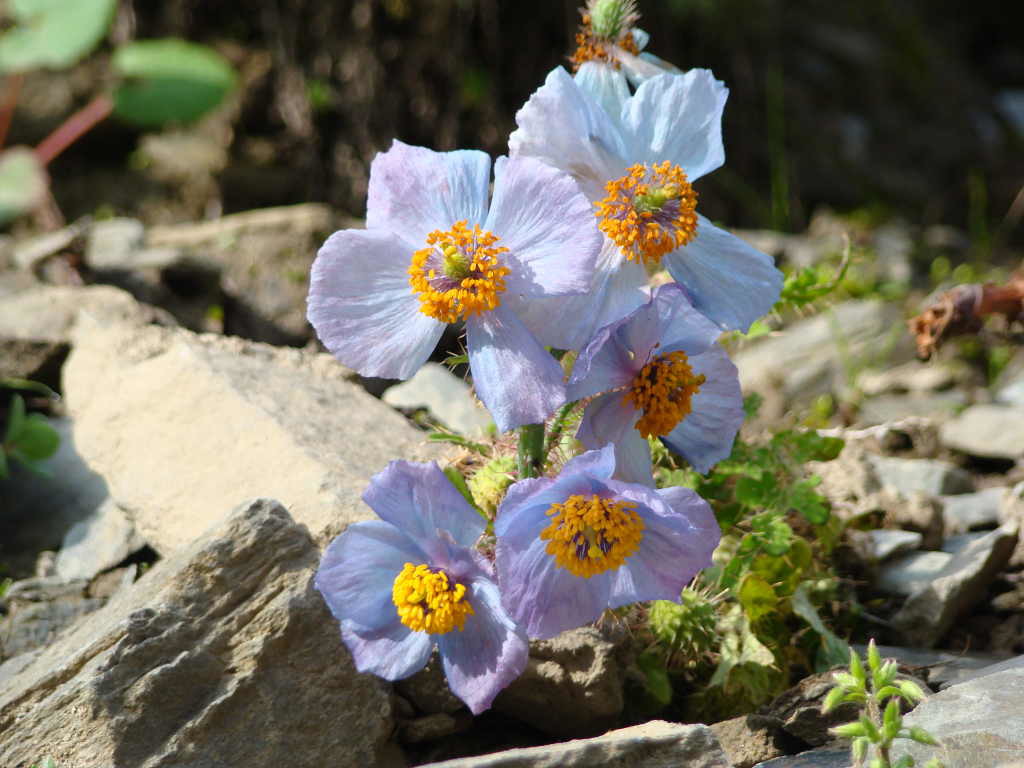
Meconopsis aculeata (Poppy)
Meconopsis aculeata, also known as the Himalayan blue poppy, is one of the most iconic and enchanting flowering plants found in the Great Himalayan National Park (GHNP). With its vibrant blue petals and delicate golden stamens, this poppy is revered both for its aesthetic appeal and medicinal significance.
Habitat and Range
This high-altitude species is typically found at elevations ranging from 3,000 to 4,500 meters, thriving in the alpine meadows, rocky slopes, and glacial moraines of GHNP. Meconopsis aculeata blooms in the late spring to mid-summer months, making it a rare but delightful sight for trekkers exploring trails like Shilt Hut, Raktisar, and Hanskund.
Botanical Features
Meconopsis aculeata is a member of the Papaveraceae family and is easily identified by:
-
Large, cup-shaped blue flowers with four silky petals
-
Prickly, hairy stems and foliage
-
Golden-yellow center stamens
-
A rosette of basal leaves
Its stunning appearance has earned it the nickname “blue jewel of the Himalayas.”
| Local name | Poppy |
| Botanical name |
Meconopsis aculeata |
| Family | Papaveraceae |
| Description and uses | It is an erect, perennial herb, 40-60 tall. Flowers large, sky-blue to purplish-blue, racemosely arranged at the apex. The best season for flowering and fruiting is June – September and is found in rock- crevices and amongst boulders in alpine zones, in all valleys of GHNP at an altitude of 3000-4200m. This plant is used as tonic. |
Medicinal and Cultural Importance
Traditionally used in Amchi (Tibetan) medicine, Meconopsis aculeata (Poppy) is believed to possess:
-
Pain-relieving and anti-inflammatory properties
-
Potential benefits for nervous disorders
-
Applications in fever and high-altitude sickness treatment
However, due to overharvesting, its wild populations are now vulnerable, making GHNP’s protected status vital for its survival.
Conservation Status
Classified as endangered in some regions, Meconopsis aculeata is increasingly under threat from:
-
Unsustainable harvesting
-
Habitat degradation
-
Climate change
Efforts by conservation authorities in GHNP include monitoring wild populations, raising awareness among local communities, and discouraging illegal plant collection.



